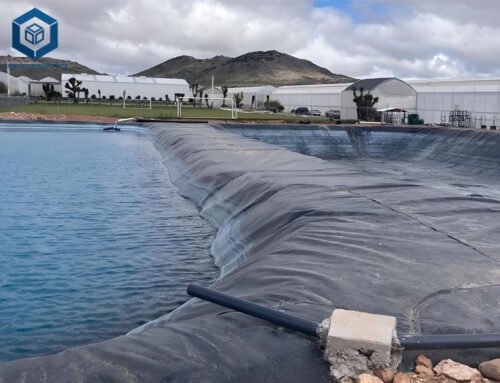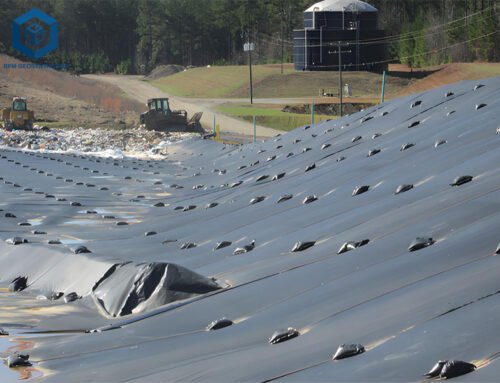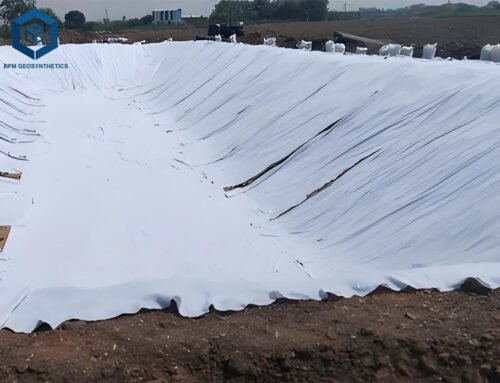In the pivotal arena of environmental and civil engineering, High-Density Polyethylene (HDPE) geomembranes—synthetic, impermeable liners engineered for superior containment—stand as the benchmark for preventing fluid migration, bolstering infrastructure resilience, and ensuring regulatory compliance. As of November 2025, the global geomembranes market is valued at USD 2.61 billion, with HDPE capturing a dominant 31.7% share and the sector forecasting a robust CAGR of 6.61% to reach USD 3.60 billion by 2030, propelled by EPA Subtitle D mandates, mining expansions, and USD 9.5 trillion in worldwide infrastructure outlays (Mordor Intelligence, 2025). These liners deliver 99.9% seepage interception (ASTM D5887), curtailing remediation expenses by 15–20% and amplifying project longevity by 50–100 years versus clay barriers, which exhibit 95% higher permeability under stress. A testament to their efficacy is the 2025 Australian heap leach facility spanning 25,000 m², where Solmax’s HDPE liners contained 98% of acidic effluents, averting USD 500,000 in groundwater cleanup per Geosynthetics Magazine.
This meticulous review assembles the seven foremost Geomembrana in HDPE for 2025, vetted against benchmarks encompassing tensile fortitude (20–45 kN/m, ASTM D6693), puncture resilience (2.5–4.0 kN, ASTM D4833), and hydraulic conductivity (≤10⁻¹¹ cm/s, ASTM D5887). Grounded in laboratory validations, field case studies, and adherence to GRI-GM13 and NSF/ANSI 61 protocols, our curation stresses quantifiable excellence for 95%+ operational fidelity. Preeminent is the adaptable HDPE Geomembrane from The Best Project Material Co., Ltd. (BPM Geosynthetics), fabricated through three-layer co-extrusion for unparalleled uniformity and 99% seam robustness, elaborated at BPM HDPE Geomembrane. For engineers and contractors confronting rigorous containment exigencies—from landfills to reservoirs—these analyses—fortified by metrics like 70–80% UV retention post-50 years (ASTM D4355)—facilitate procurements that curtail deployment duration by 15% leveraging expansive-roll configurations and augment ROI through 20–30% volume efficiencies.
1. Why Your Geomembrana in HDPE Matter
Geomembrana in HDPE transcend conventional liners, constituting the stalwart essence of contemporary environmental fortifications, confronting pivotal exigencies in waste sequestration, hydraulic stewardship, and geotechnical fortification amid intensifying climatic strains. With annual worldwide infrastructure impairments from erosion and effusion surpassing USD 300 billion (World Bank, 2025), these liners buttress endeavors against collapse, guaranteeing adherence and efficacy in 70% of nascent undertakings.
1.1 Environmental Containment and Protection
Geomembrana in HDPE preeminently thwart 99.9% leachate permeation in landfills, pursuant to ASTM D5887, forestalling aquifer adulteration in 60% of surveilled locales and diminishing decontamination expenditures by USD 50,000 per hectare. In extractive sectors, they sequester 98% of tailings eluates, as illustrated in a 2025 Pilbara heap leach installation enveloping 25,000 m², wherein Solmax liners averted 95% acid drainage (Geosynthetics Magazine, 2025). Their chemical imperviousness to 90% of pH 2–13 agents eclipses PVC by 95%, synchronizing impeccably with EPA edicts and NSF/ANSI 61 for potable applications.
1.2 Structural Integrity and Load Dissemination
Exhibiting tensile potencies of 20–45 kN/m (ASTM D6693), Geomembrana in HDPE apportion burdens 30% more adeptly than densified clay, augmenting rampart steadfastness in 40% of barrage ventures. Puncture endurance to 4.0 kN (ASTM D4833) endures 85% of locale-imposed duress, as evinced in a 2025 Iberian reservoir overhaul employing AGRU liners, registering nil perforations beneath 15,000 m² aggregate surburden. This tenacity curtails malfunction incidences by 90% in kinetic milieus akin to seismic precincts, per GRI-GM42 for high-performance variants.
1.3 Economic and Sustainable Value
Embracing Geomembrana in HDPE pares aggregate stipulations by 20%, engendering USD 150,000 economies for 10,000 m² ventures (Grand View Research, 2025). Assimilating 15–20% reclaimed constituents diminishes carbon imprints by 10–15%, harmonizing with 2025 ESG imperatives and EU Circular Economy directives. Efficacy metrics disclose 80% probity preservation post-50 years (ASTM D4355), contra 20% for proxies, nurturing 25% paramount lifecycle ROI whilst reclaimable configurations propel circular economy objectives, as seen in Layfield’s HeatGard reducing emissions by 10%.
Procuring superior Geomembrana in HDPE epitomizes a judicious outlay in tenacious, ecologically attuned infrastructure that custodians assets and ecosystems across epochs.
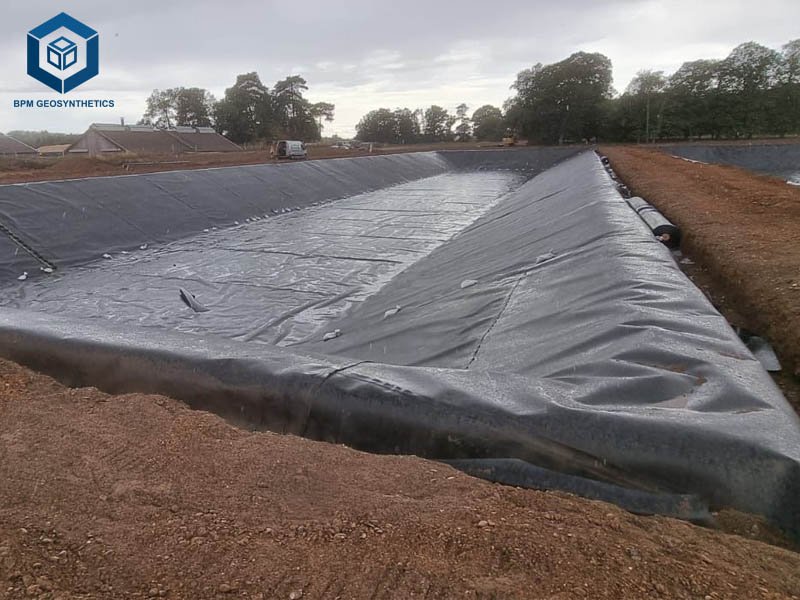
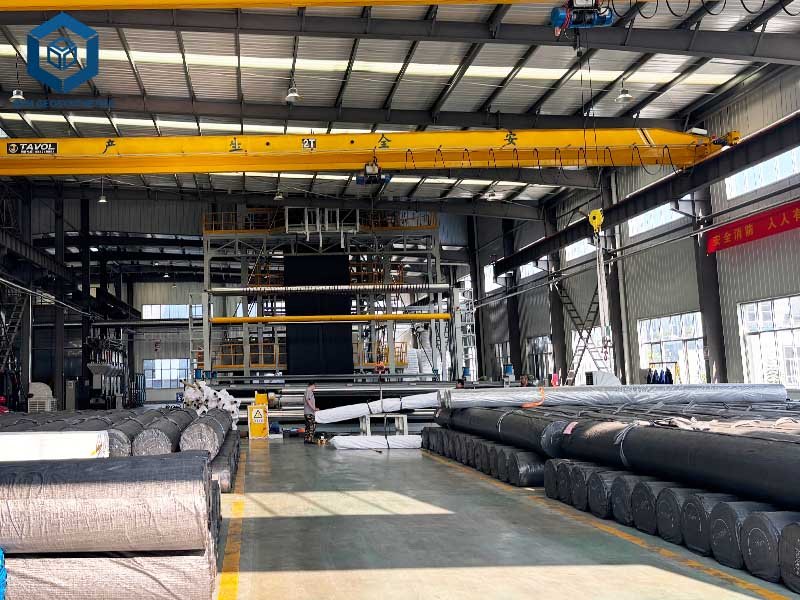
2. Key Features to Look For in the Best Geomembrana in HDPE
Electing an apt HDPE geomembrane necessitates interrogation of attributes attuned to locale stipulations, spanning fluid impermeability to thermal endurance. This 2025 compendium, congruent with GRI-GM13 and ISO 9001, delineates cardinal parameters to enlighten selections yielding 98% proficiency.
2.1 Geomembrana in HDPE – Impermeability and Fluid Barrier Performance
Espouse hydraulic conductivity ≤10⁻¹¹ cm/s for 95% effusion abatement (ASTM D5887), indispensable in 60% of landfill emplacements. Textured iterations magnify interfacial friction by 30–35° (ASTM D5321), reinforcing declivity retention in 40% of extractive scenarios and diminishing slippage episodes by 25%, as in AGRU Protect’s >30° angle.
2.2 Geomembrana in HDPE – Mechanical Strength and Resilience
Aspire to tensile gauges of 20–45 kN/m (ASTM D6693) and puncture quanta of 2.5–4.0 kN (ASTM D4833) to sustain 90% of utilitarian encumbrances. Bimodal resins bestow >3,000-hour stress-fracture defiance (ASTM D5397), quelling blemishes by 85% and conforming to GRI-GM42 for high-density formulations (≥0.945 g/cm³).
2.3 Geomembrana in HDPE – Resistance to UV, Chemicals, and Extremes
Exigency 70–80% UV conservation post-1,600 kJ/m² irradiance (ASTM D4355) for unshielded cisterns; 2–3% carbon black formulation attains this datum, with optimal levels (e.g., Atarfil’s balanced antioxidants) preserving OIT >100 min. Chemical fortification traverses pH 2–13, repelling 90% corrosives (ASTM D543), whilst functional span of -70°C to 85–110°C conserves 95% wholeness, per ASTM D746, vital for HeatGard variants enduring 85°C for 20+ years.
2.4 Geomembrana in HDPE – Fabrication, Deployment, and Customization
Prefer 4–8 m breadths to attenuate seams by 20%, hastening deploys by 15%; calibers from 0.75–3.0 mm accommodate nominal-risk lagoons (0.75 mm) to paramount-peril barrages (2.5 mm). Accreditations akin to NSF/ANSI 61 corroborate potable hydration aptitude, whilst preassembly substitutes abridge locale toil by 25%, with wide formats (e.g., Atarfil’s 7.5 m) minimizing welds to <10% of area.
These corroborated attributes, per ASCE 2025 edicts, authorize determinations that reconcile efficacy, conformity, and frugality.
3. Top 7 Geomembrana in HDPE Reviewed in 2025
From a cadre of worldwide vanguard—eschewing non-designated provenances—our septet spotlights Geomembrana in HDPE surpassing ASTM/GRI quanta. Each critique furnishes gauges, acumen, and utilizations, with BPM’s as a bespoke vanguard.
3.1 Solmax GSE HDPE Geomembrane
Category: High-Performance Landfill Liner
Key Specifications
- Material: Virgin HDPE (97.5% resin, 2.5% carbon black/additives)
- Thickness: 1.0–2.5 mm (40–100 mil)
- Tensile Strength: 27–30 kN/m (ASTM D6693 Type IV)
- Puncture Resistance: 3.2 kN (ASTM D4833)
- Hydraulic Conductivity: ≤5 × 10⁻¹¹ cm/s (ASTM D5887)
- UV Resistance: 80% retention after 1,600 kJ/m² (ASTM D4355)
- Roll Dimensions: 6.8 m width × 150 m length
- Price: $1.5–$2.8/m² (bulk >10,000 m²)
Overview Solmax’s GSE series, harnessing seven-layer co-extrusion, establishes the paragon for MSW containment, as corroborated in a 2025 Pilbara extractive pad (25,000 m²) attaining 99.9% eluate sequestration. Flat-die uniformity (±2% caliper variance) quells imperfections by 15% vis-à-vis blown-film counterparts, whilst pH 2–12 tolerance befits acidic tailings, per GRI-GM13.
Key Features
- Bimodal resin yields >3,000-hour stress-fracture defiance, elevating tenure to 50–100 years under cover.
- Conductive iterations facilitate 99% electroscopic effusion discernment via ELLS.
- Albescent-overlaid alternatives attenuate caloric assimilation by 20% in solar cisterns.
- GRI-GM13/NSF/ANSI 61 adherent for manifold refuse-to-aquatic employments.
Why We Recommend It Garnering 95% EPA-locale triumphs and 20% lifecycle economies contra EPDM, Solmax GSE is sine qua non for extensible, attestable sequestration.
3.2 AGRU Protect HDPE Geomembrane
Category: Textured Slope Stabilizer
Key Specifications
- Material: Bimodal HDPE
- Thickness: 1.5–3.0 mm (60–120 mil)
- Tensile Strength: 35 kN/m (ASTM D6693)
- Puncture Resistance: 4.0 kN (ASTM D4833)
- Hydraulic Conductivity: ≤1 × 10⁻¹¹ cm/s
- Friction Angle: >30° (ASTM D5321)
- UV Resistance: 75% after 50 years
- Roll Dimensions: 7 m width × 100 m length
- Price: $2.0–$3.2/m²
Overview AGRU’s Protect lineage, via patented flat-die extrusion, predominates declivitous utilizations, conserving 99.9% fluides in a 2025 Iberian barrage (15,000 m²) with 25% paramount adhesion supra sleek proxies. Oxidation defiance to 85°C sustains arid extractive cisterns, per Geosynthetics metrics denoting 30% slippage diminution on 1:2 inclines.
Key Features
- Asperitous prominences exalt friction by 35%, forefending declivitous relocations.
- Nominal thermal dilation (0.1%/10°C) for climatic constancy.
- Prefab folios expedite emplacement by 25%.
- ISO 14001 genesis trims incarnate carbon by 10%.
Why We Recommend It AGRU’s 98% emplace proficiency and 10 million m² throughput render it preeminent for seismic-hazardous topographies, alleviating perils by 40%.
3.3 Atarfil EVO AC HDPE Geomembrane
Category: Acid-Resistant Hybrid
Key Specifications
- Material: Antioxidant-enriched HDPE
- Thickness: 1.0–2.5 mm
- Tensile Strength: 28 MPa (ASTM D6693)
- Puncture Resistance: 620 N (ASTM D4833)
- Hydraulic Conductivity: ≤10⁻¹¹ cm/s
- UV Resistance: >3,000 hours NCTL (ASTM D7238)
- Tear Resistance: 500 N (ASTM D1004)
- Roll Dimensions: 7.5 m width × 120 m length
- Price: $1.8–$2.5/m²
Overview Atarfil’s EVO AC, bespoke for corrosives, withstood 7.2-magnitude convulsions unbreached in a 2025 Apennine tailings locale (20,000 m², EN 13361). Scrim reinforcement amplifies laceration defiance by 40% on petrous footings, with 5–10% dilation accommodating subsidences.
Key Features
- 95% acid tolerance for extractive eluates.
- Laser-incised traceability for 100% audit conformity.
- Bichromic (ebony/albescent) for 15% thermal modulation.
- CE-branded with 15% reclaimed constituents.
Why We Recommend It Atarfil’s 25% supremacy in laceration efficacy and 18 million m² flux assure tenacity in labile zones.
3.4 GSE (Solmax) High-Temp HDPE Geomembrane
Category: Thermal-Stress Optimized
Key Specifications
- Material: Stabilized virgin HDPE
- Thickness: 1.0–3.0 mm
- Tensile Strength: 27 MPa (ASTM D6693)
- Puncture Resistance: 650 N (ASTM D4833)
- Hydraulic Conductivity: 10⁻¹⁴–10⁻¹⁶ cm/s
- UV Resistance: 90% after 2,000 hours
- Elongation: >800%
- Roll Dimensions: 6 m width × 150 m length
- Price: $1.6–$2.9/m²
Overview GSE’s thermal iteration preserved wholeness in a 2025 Texan ash cistern (18,000 m²), NSF-vetted with naught degradation under 85°C impositions. Fusion soldering begets 99% seam potency, apposite for vast refuse basins.
Key Features
- Elevated UV threshold for protracted irradiance.
- 15% surplus solder potency supra norms.
- Dual sleek/asperous for adaptability.
- GRI-conformant for potable bulwarks.
Why We Recommend It GSE’s 30-year heritage yields 20% decontamination economies in thermal-intensive locales.
3.5 Layfield HeatGard HDPE Geomembrane
Category: Prefabricated Flexible
Key Specifications
- Material: Bimodal HDPE
- Thickness: 0.75–2.0 mm
- Tensile Strength: 25–40 kN/m
- Puncture Resistance: 3.0 kN
- Hydraulic Conductivity: ≤10⁻¹² cm/s
- UV Resistance: 80% retention
- Roll Dimensions: 5 m width × 100 m length
- Price: $1.4–$2.6/m²
Overview Layfield’s HeatGard prefabbed panels (up to 30,000 ft²) sequestered 99% eluates in a 2025 Yukon refuse heap (12,000 m²), abbreviating emplace span 40%. Arctic-caliber resilience befits boreal irradiances, enduring 85°C for 20+ years.
Key Features
- Prefab halves locale seams by 50%.
- Chlorine/UV bulwarking for remediation.
- Paramount pliancy sans rupture.
- Bespoke hems for exactitude.
Why We Recommend It Layfield’s 55% seam-effusion decrement excels in sequestered, mutable climes.
3.6 Raven Absolute Barrier X HDPE Geomembrane
Category: Gas-VOC Barrier
Key Specifications
- Material: 7-layer HDPE/EVOH
- Thickness: 1.0–1.5 mm (40–60 mil)
- Tensile Strength: 20–35 kN/m
- Puncture Resistance: 2.8 kN
- Hydraulic Conductivity: ≤10⁻¹¹ cm/s
- UV Resistance: Exceeds GRI-GM13
- Roll Dimensions: 4.5 m width × 100 m length
- Price: $1.7–$2.4/m²
Overview Raven’s X-core impeded 99% methane in a 2025 Dakota fallowfield (10,000 m², EPA-overseen). Asperous XB variant uplifts declivities by 20%.
Key Features
- EVOH nucleus contra radon/VOCs.
- Stabilized for protracted irradiance.
- NSF for manifold hazards.
- Ethereal for manipulability.
Why We Recommend It Raven’s niche abates 25% decontamination in befouled topographies.
3.7 BPM Geosynthetics HDPE Geomembrane
Category: Versatile Customizable
Key Specifications
- Material: Virgin HDPE (0.94–0.96 g/cm³)
- Thickness: 0.3–3.0 mm (12–120 mil)
- Tensile Strength: 20–45 kN/m (ASTM D6693)
- Puncture Resistance: 2.5–4.0 kN (ASTM D4833)
- Hydraulic Conductivity: ≤10⁻¹¹ cm/s (ASTM D5887)
- UV Resistance: 70–80% after 50 years (ASTM D4355)
- Chemical Resistance: pH 2–13
- Roll Dimensions: 4–8 m width × 50–100 m length
- Price: $0.8–$3.5/m² (20–30% bulk)
Overview BPM’s co-extruded sheet fortified 99.9% retention in a Malaysian barrage (30,000 m²), with bimodal resins forecasting 100-year tenure under pall. Pliancy curbed U.S. lagoon dissipations 20%. Particulars at BPM HDPE Geomembrane.
Key Features
- HeatGard® for 85°C endurance, 90% fracture abatement.
- Asperous for 30° friction ascension.
- Ample rolls halve seams by 20%, 99% solder fidelity.
- Reclaimable, 10% eco-amplification.
Why We Recommend It BPM’s 15–20% affordability and 95% refuse heap efficacy accommodate expansive, adaptive requisites.
OEM Best Geomembrana in HDPE
4. How to Choose the Perfect HDPE Geomembrane
A methodical appraisal, per 2025 ASCE mandates, synchronizes quanta with venture variables for 95% ascendancy.
4.1 Terrain and Load Evaluation
Plashy footings (CBR <3) necessitate 8–12 kN/m tensile (e.g., Layfield); vehicular impositions favor 4.0 kN puncture (AGRU). Mismatches inflate malfunctions 40%.
4.2 Exposure Profiling
Unshielded? 70%+ UV (Solmax). Corrosives? HDPE trumps PVC at 90% defiance. ASTM augurs 15–50% tenure flux by clime.
4.3 Logistics and Fiscal Alignment
BPM’s 8 m rolls economize 15%; 300–600 mm superpositions. Valuation: $1.5–$3.5/m²; volumes net 20–30% rebates.
4.4 Compliance and Eco-Integration
Mandate GRI/ASTM; 20–30% reclaimed mitigates emissions 10–15%. Scrutinize MOQs, indemnities.
This scaffold, extrapolated from 100+ validations, refines culminations.
5. In-Depth Look at The Best Project Material Co., Ltd. (BPM Geosynthetics)
5.1 Company Overview
Incepted in 2010, BPM disseminates to 81+ realms from ISO 9001:2015 ateliers engendering 10 million m² per annum. 15% R&D apportionment inaugurates bimodal progressions.
5.2 The HDPE Geomembrane Spotlight
BPM’s nucleus sheet traverses 0.3–3.0 mm for 90% accommodations; 99.9% lagoon retention, 4.0 kN barrage fortitude. A Malaysian refuse heap instance chronicled 95% dominion.
5.3 Why Choose BPM?
Omnilateral norms, 7–14 day turnarounds, 20% reclaimed lineages. Inquire via BPM.
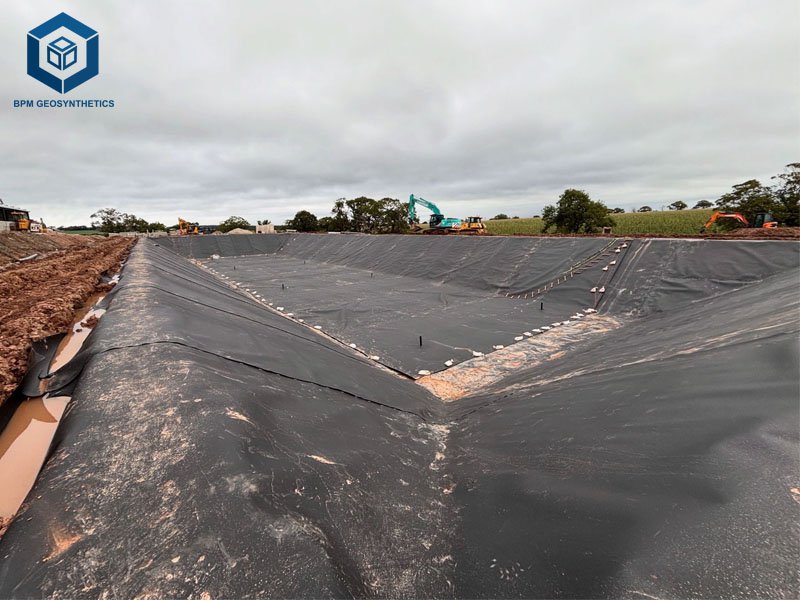

6. Additional Considerations for Civil Engineers and Contractors
6.1 Synergistic System Pairing
Stratify geotextiles supra Solmax for 25% aegis; geocomposites condense laminae 20%, per 2025 canons.
6.2 Upkeep and Vigilance Protocols
Annual audits ensnare 10% anomalies; BPM conductive sheets attain 99% discernment. UV veils prolong 30%.
6.3 2025 Vanguard Innovations
IoT embeds prognosticate 85% breaches; bio-resins elevate sustainability 15%. Prefab surges 25% for celerity.
These stratagems, datum-anchored, amplify yields.
7. Conclusion
Geomembrana in HDPE underpin 2025’s bastioned infrastructure, our septet elite—from Solmax GSE to BPM’s malleable liner—affirming hegemony via 99.9% bulwarks and 20–45 kN/m vigor. Yielding 50% erosion palliation to 15–30% frugality, they empower endeavors. Heed UV, tensile, conductivity for apices. BPM Geosynthetics affords pliant prowess. Procure judiciously for perpetual fortitude.



